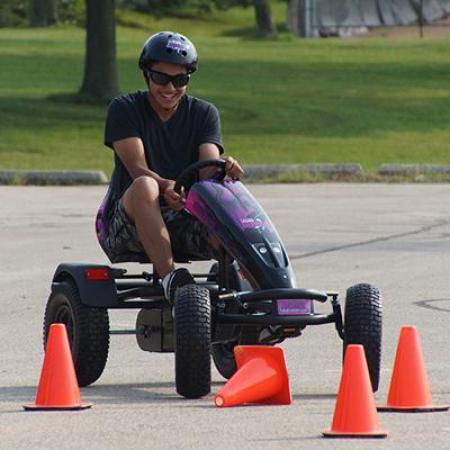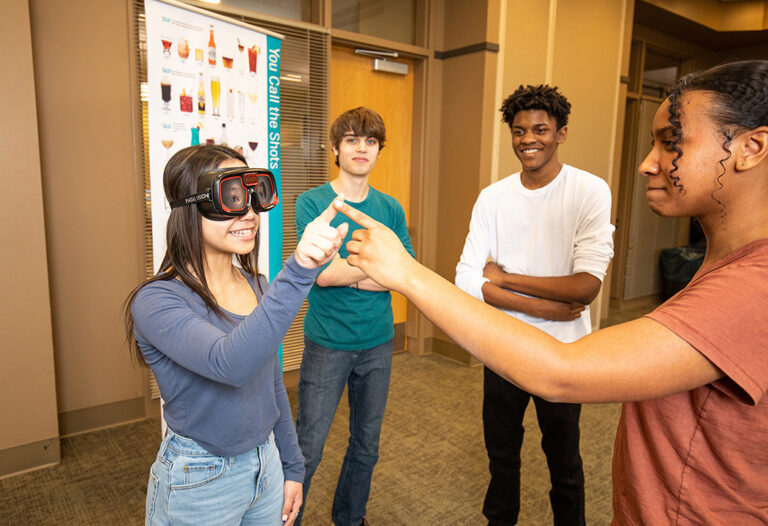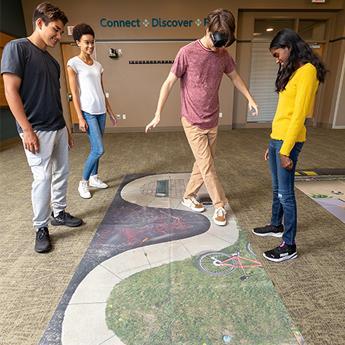Help your drunk driving prevention lessons resonate with students.
When educating students, especially in the critical area of drunk driving prevention, the challenge isn’t just in delivering the content—it’s ensuring that the learning is retained. These drunk driving prevention tips can help educators not only inform students, but also inspire a lasting commitment to safe driving practices.
The effectiveness of these educational programs hinges on an ability to engage students and to promote long-term retention of the lessons taught. Here, we’ve rounded up several drunk driving prevention tips that educators can adopt to maximize the impact of their drunk driving prevention lessons.
Incorporating Hands-on, Engaging Activities
The traditional lecture format, while informative, often falls short in making a lasting impression on students. For example, research by a psychologist revealed the existence of the “Forgetting Curve,” in essence, your students will forget 70% of what they’ve learned in 24 hours, and 90% within a week unless actions are taken to retain the information. Thankfully, there are ways to make sure your students retain that vital information.
To counteract this, educators can integrate hands-on and engaging activities into their curriculum. For example, using impaired driving simulators like the Roadster Pedal Kart and the SIDNE Vehicle with Fatal Vision Alcohol Goggles can provide a deeper understanding of the dangers of drunk driving. These interactive experiences are not only more memorable but also allow students to feel the potential consequences of driving under the influence firsthand while in a safe environment.
Adapting to Various Learning Styles
Recognizing that students absorb information differently is crucial in crafting effective education programs. Some learners may benefit from visual aids, such as videos or infographics, while others might find discussions or written materials more impactful. By employing a variety of teaching methods, educators can ensure that the message resonates with all students in the audience. This approach not only caters to different learning preferences but also reinforces the lesson through multiple channels, assisting overall retention.
Asking and Incorporating Student Feedback
One of the most direct ways to gauge a drunk driving prevention program’s effectiveness is to seek feedback from the students. Encouraging students to share their thoughts on what aspects of the lesson were most impactful or where they felt disengaged can provide valuable insights to educators and help tailor the message in the future. This feedback allows educators to fine-tune their approach, making the content more relatable and engaging. By showing that their opinions are valued and acted upon, students are more likely to invest in the learning process and internalize the lessons.
Emphasizing Real-Life Stories and Scenarios
Connecting the curriculum to real-life scenarios can significantly enhance retention. Sharing stories of individuals affected by drunk driving, whether through guest speakers or case studies, puts a human face on the statistics. These personal accounts can evoke emotional responses that is harder with data or numbers, making the dangers of drunk driving more tangible and the lessons more memorable. Statistics and stories specific to your local area can have an even deeper impact because it shows that real-life consequences can happen to anyone, anywhere.
Continuous Reinforcement
Finally, reinforcing the message beyond the initial educational session is critical. Follow-up activities, reminders, or content that students see every day is a great way to maintain the drunk driving prevention message. Check out the many posters and banners here, or look to the program resources for follow up material. Regular reinforcement aids in transitioning the information from short-term memory to long-term commitment, helping to improve learning retention for your drunk driving prevention program.
By adopting these drunk driving prevention tips, educators can significantly increase the likelihood that students will not only retain the information but also act on it. Engaging activities, varied teaching methods, student feedback, real-life connections, and continuous reinforcement are helpful components in building an effective drunk driving prevention education program. For more resources, check out the blog here.






